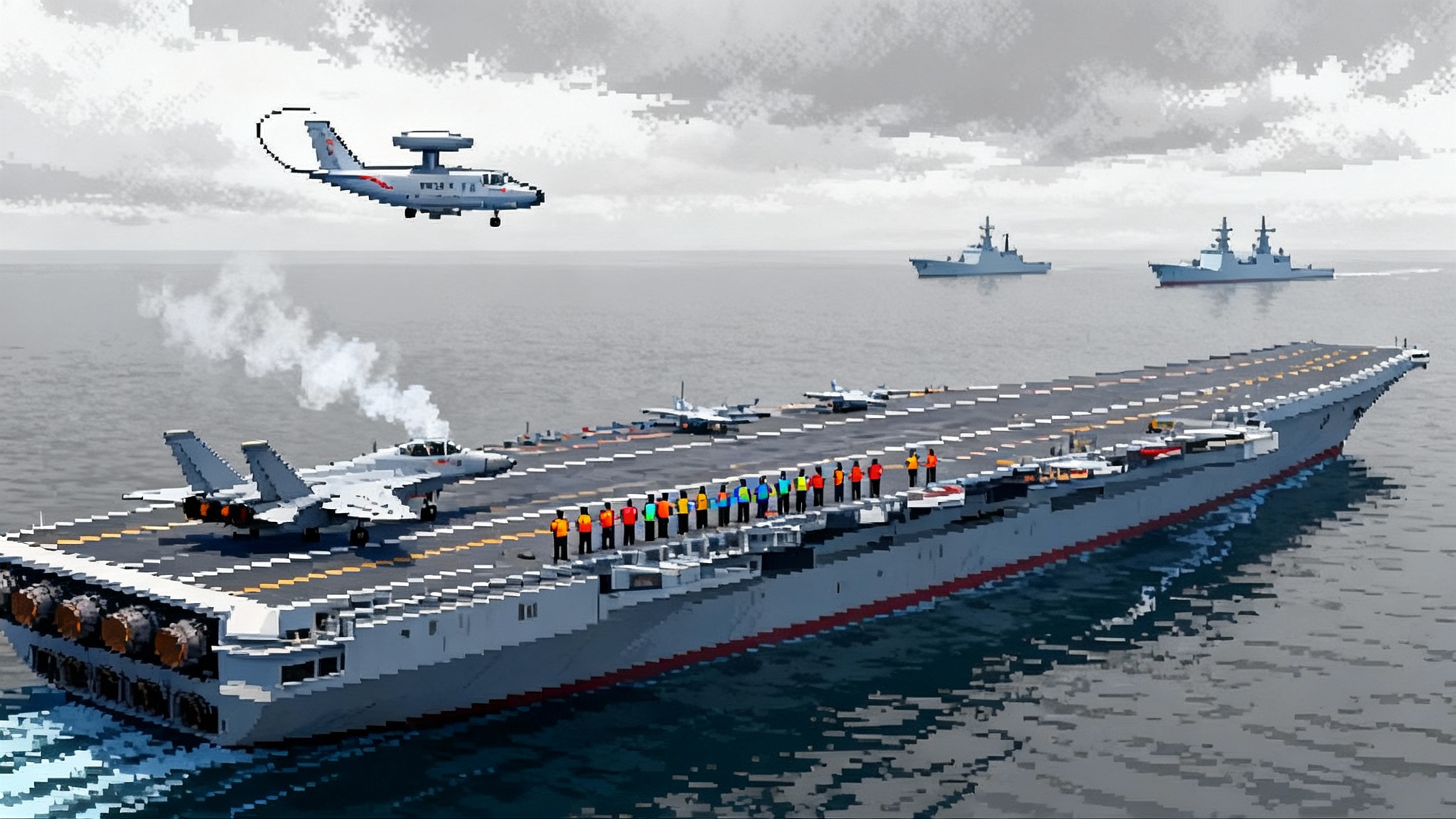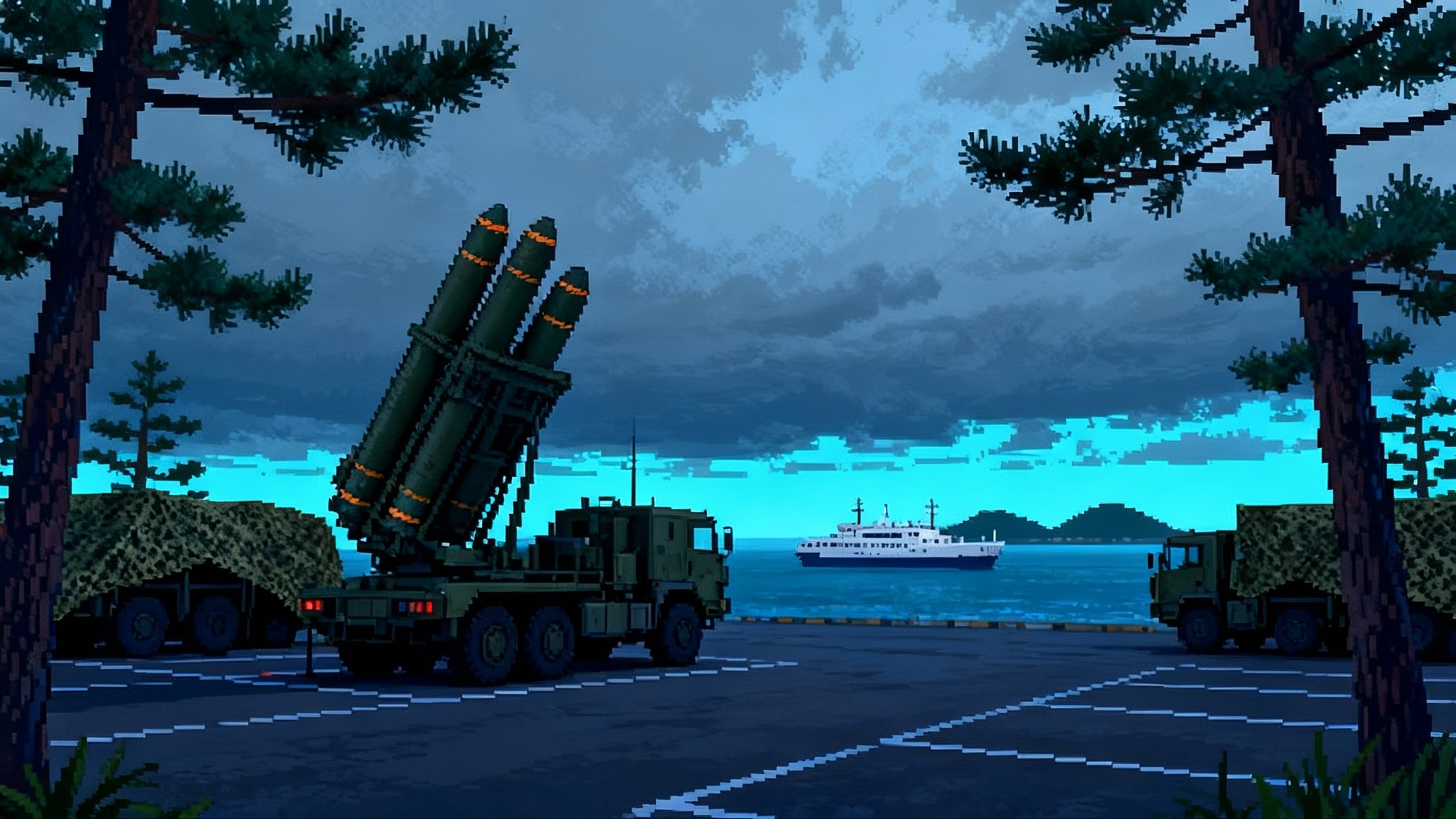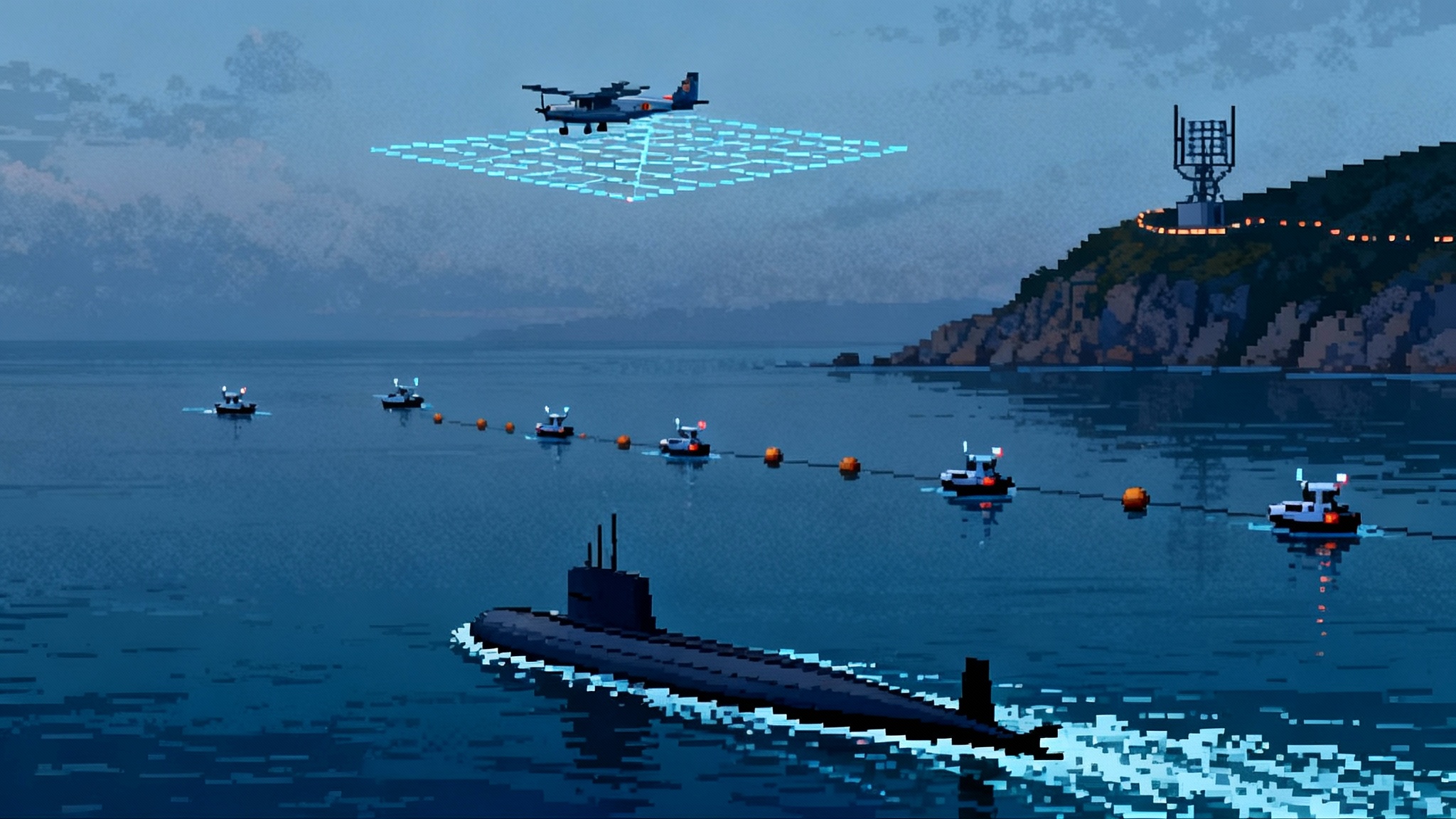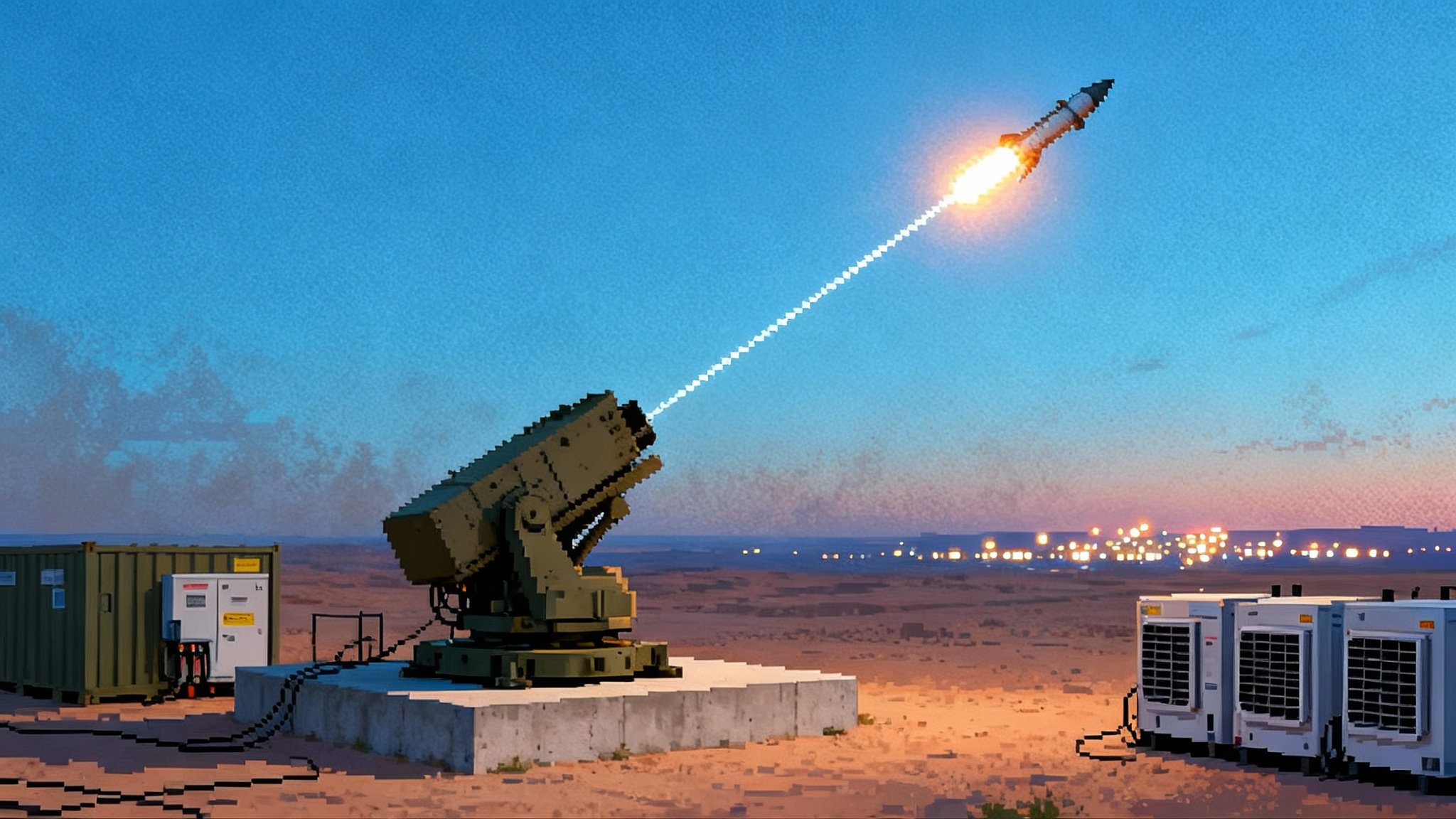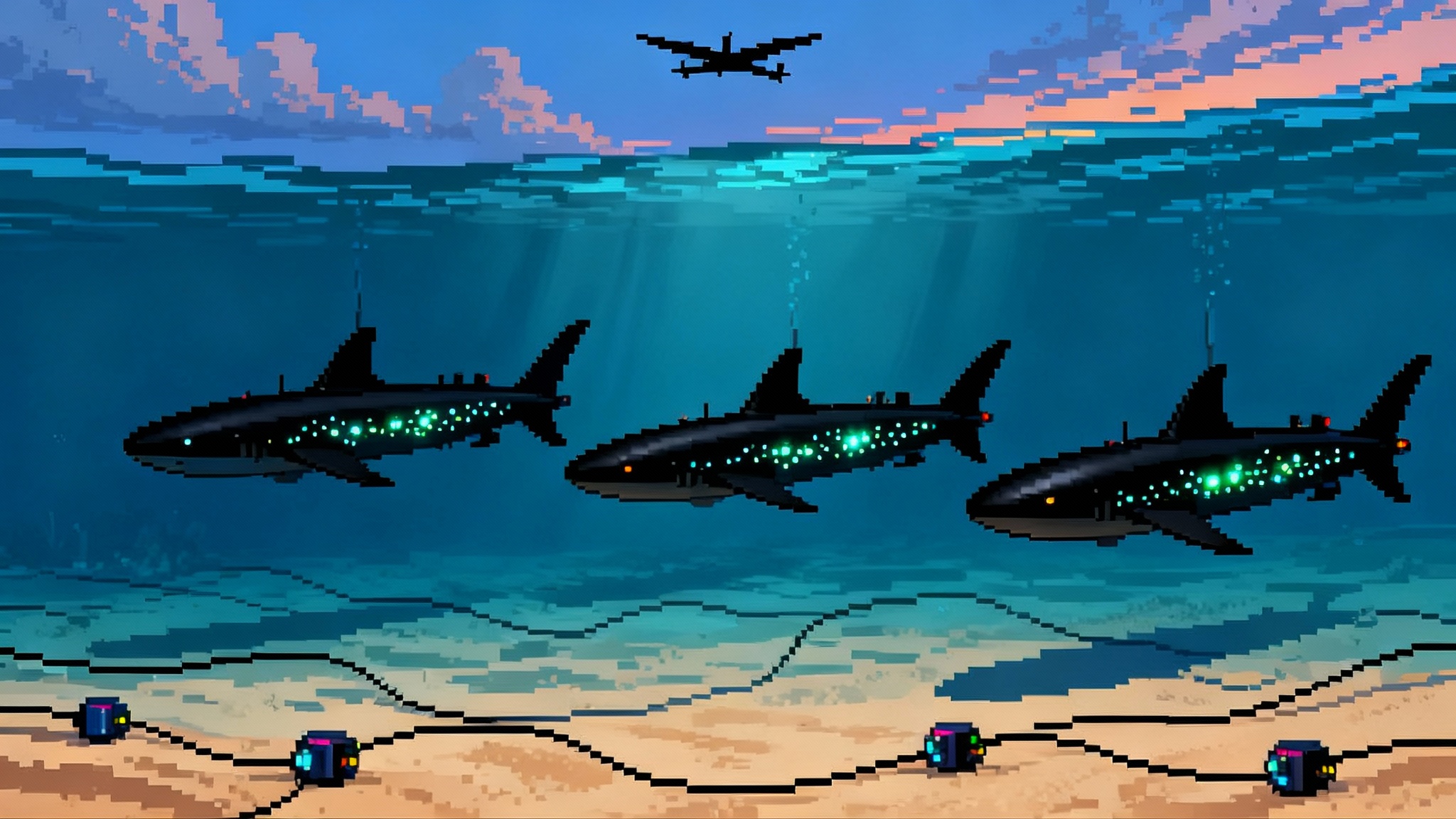JATM’s 2025 breakout: how AIM-260 rewrites the outer-air fight
After years in the shadows, the AIM-260 Joint Advanced Tactical Missile is stepping into view. Test breadcrumbs and fresh FY26 budget lines point to a real shift in reach, loadouts, and tactics for U.S. and allied fighters facing peer air threats.

From hush hush to shaping the fight
For half a decade, the AIM-260 Joint Advanced Tactical Missile existed mostly as a rumor with a designation. In 2025, that shifted. A rare official rendering surfaced, Navy test squadrons hinted at live shots, and the first clear budget lines signaled procurement at scale. Taken together, those breadcrumbs mark a breakout year for the next U.S. beyond visual range air to air missile and a turning point in how America and its allies will contest the outer air battle.
At the highest level, the story is simple. The United States wants a stealth carriable missile with longer reach, tougher electronic resilience, and faster endgame performance than the AIM-120 AMRAAM it has relied on for three decades. The 2025 documents say as much without saying much. The Air Force’s FY26 missile procurement books include a dedicated line for Joint Advanced Tactical Missile funding with hundreds of millions requested and the details classified, a familiar pattern when a Special Access Program is moving from development to early fielding, as shown in the FY26 Air Force missile procurement.
What changed in 2025
- A public face. In February 2025, a Navy portfolio slide showed a clean, drag conscious form consistent with internal bay carriage and four tail fins. It tracked with earlier Air Force artwork and confirmed the general silhouette many expected. The design cues suggest a focus on high energy endgame and low drag rather than mid body maneuvering surfaces.
- Visible testing breadcrumbs. Developmental and operational test units referenced riskier stores work and live events in 2024 and 2025, later acknowledged by the Navy as continuing evaluation. That does not equal immediate fielding, but it is unusually public for a program that has kept a low profile.
- Procurement signals. The Navy’s FY26 justification materials introduce a direct JATM procurement line and show a sharp drop in AMRAAM buys for FY26 compared to FY25, indicating a pivot in the carrier air wing’s magazine planning, as reported in Navy begins JATM procurement.
These developments are modest on their own. Together, they mark the inflection point where planning assumptions change. Air wings and fighter wings can now plan for AIM-260 arrival within current Program Objective Memorandum timelines rather than treating it as a perpetually future capability.
How AIM-260 extends reach against peer AAMs
The core driver for JATM is straightforward. Match and overmatch missiles like China’s PL-15 and Russia’s most modern R-77 variants by restoring U.S. standoff and endgame confidence. Public numbers for JATM range and kinematics remain classified. Still, several open design facts matter operationally:
- Form factor compatibility. By keeping to AMRAAM like length and diameter, JATM stays compatible with F-22 and F-35 internal bays, a prerequisite for stealthy employment in contested airspace.
- Low drag airframe. The lack of mid body fins in the rendering implies a design that trades some classic midcourse maneuvering for efficiency and better energy management, especially at high altitude and speed. In the outer air fight, conservation of energy into the terminal phase matters as much as raw range.
- Network centric guidance. While specifics are classified, AIM-260 is widely understood to inherit and improve on two way data and in flight retargeting paradigms that matured with late model AMRAAM. This dovetails with the SDA Tranche 1 transport mesh, enabling earlier shots with resilient midcourse updates from offboard sensors.
Put simply, JATM is built to pair with fifth generation sensors and networking. It is not just a longer stick. It is a missile optimized to be cued by stealth platforms, E-2D, ground based sensors, and space based tracks, then to receive updates through resilient links until the seeker goes active close to the target.
Rebalancing carrier and land based loadouts
The outer air battle of the 2030s will look more like a layered team sport than a knife fight. JATM helps push the defensive and offensive counter air rings farther from carriers and bases, with several immediate effects:
- Carrier air wings. Super Hornets and F-35Cs can re optimize their loadouts. Expect CAP sections to carry a mix of JATM and AIM-120D-3 in the near term, with the balance shifting toward JATM as inventory grows. The AIM-174B offers a niche counter for very long range maritime threats, but it is not a replacement for a stealth carriable primary AAM. JATM restores the core BVR punch inside the F-35C’s bays and on Super Hornet pylons without forcing a choice between reach and survivability.
- Land based airpower. F-22s and F-15EXs will be natural JATM mules for offensive counter air, with the F-22 using internal carriage for stealth ingress and the F-15EX carrying larger missile counts for magazine depth. The F-35A’s role grows as TR-3 and Block 4 stabilize, enabling carriage, fuzing, and employment modes optimized for JATM.
- Magazine strategy. Because early JATM production will be limited, squadrons will mix weapons to manage magazine depth. AMRAAM sustainment remains essential for training and surge capacity. Over time, as JATM lots rise and unit cost trends improve, the mix will gradually shift.
Tactics for F-22 and F-35 with JATM
- Earlier and higher. Expect a return to high altitude CAP and intercept geometries that exploit low drag and high energy shots. F-22s can take first looks and first shots while staying emission controlled, using third party tracks and secure intra flight data links to time seeker activation late.
- Distributed kills. F-35s can function as stealthy forward sensors and opportunistic shooters. A section can prosecute shots guided by another section’s sensor picture. With JATM, the window for those cooperative shots widens, letting stealth fighters remain silent and off axis longer.
- Multi axis pressure. Longer ranged weapons enable bracket attacks that force threat fighters and bombers to skate between terminal baskets, opening them to follow up shots. In mixed packages, F-15EXs provide volume, while F-22 and F-35 pairs deliver the stealth shots that shape adversary formations.
- Carrier defense geometry. With JATM, the defended footprint around carriers can be pushed out while maintaining sufficient missile energy for terminal counter countermeasures. That buys the air wing time and options when facing raids escorted by advanced fighters.
Transition from AMRAAM sustainment to JATM adoption
AMRAAM remains the multinational backbone. The latest D-3 builds improved range and electronic resilience and will be the bulk round for many years. But budgets are beginning to reflect a change in emphasis. The Navy’s FY26 plan introduces JATM procurement and trims AMRAAM quantities sharply relative to FY25, a strong tell that planners are reserving magazine space and money for AIM-260 as it arrives, as indicated in Navy begins JATM procurement. The Air Force’s FY26 books likewise break JATM out as its own line with a substantial request while leaving quantities classified. In practical terms, sustainment of AMRAAM goes on, but the growth dollars point to AIM-260.
Expected sequence:
- Early fielding to F-22 with limited training allocations and tightly controlled live shots.
- Navy integration on Super Hornet to firm up fleet carriage and employment envelopes.
- F-35 integration gated by TR-3 and Block 4, with initial operational use on U.S. variants before broader coalition adoption.
During this period, AMRAAM inventory remains critical. Squadrons will train primarily with AMRAAM surrogates and simulators, reserving JATM for peacetime test shots and war reserve stockpiles until production rates climb.
Integration timelines and industrial ramp
- F-22. Long signaled as the first platform, the Raptor’s internal bays and sensor fusion make it the natural early JATM user. Public test hints and budget timing suggest early operational capability mid to late decade, expanding as lots deliver.
- F A 18E F. Navy test activity points to envelope work well under way. Carrier certification typically forces a meticulous sequence of captive carries, separations, and live fires. The budget line is a strong indicator that integration work has moved beyond the exploratory phase.
- F-35. The path runs through TR-3 stabilization and Block 4 increments. Once carriage and employment are cleared, the stealth fleet’s ability to set up long range shots with offboard updates is where JATM changes the game the most. The Vectis CCA concept also hints at future teaming that could expand magazine depth and sensing baselines.
- Industrial base. The missile’s motor, seeker, and datalink components tap the same stressed microelectronics and solid rocket motor supply chains as other high end munitions. Budget language across multiple programs in 2025 highlights vendor base bottlenecks and long lead buys to lock down critical parts. Expect early lots to emphasize schedule assurance over cost minimization, followed by multi year contracting and economic order quantities to raise throughput.
Coalition implications in the Indo Pacific and NATO
AIM-260 is a U.S. led, classified program. That creates a predictable sequence for allies:
- Near term. F-35 operators and close partners continue to build depth with AMRAAM D-3 while watching U.S. integration. In Europe, Meteor remains an alternative on non U.S. platforms and a hedge for nations that do not expect near term JATM access.
- Midterm. Expect selective foreign military sales once U.S. services have established inventory and training baselines. Indo Pacific allies with frontline roles and F-35 fleets, like Japan and Australia, are the likeliest early candidates if policy allows.
- NATO. Nations aligned to U.S. software baselines and security frameworks will find adoption easier. Training pipelines and tactics sharing will be more constrained than with AMRAAM due to classification. This argues for combined exercises that focus on kill chain integration rather than missile specifics, building on constructs like Guam's joint kill web.
The coalition effect of JATM is not just about who gets the missile. It is about who can plug into the kill web that makes it lethal. E-7, E-2D, ground based AESA sensors, and space based contributors feeding stealth shooters are the real advantage.
Countermeasures, data linking, and training changes
Adversaries will answer a longer range, low observable carried missile with more electronic attack, decoys, and kinematics. Three areas will see the biggest shifts in training and TTPs:
- Electronic warfare and ECCM. Crews will train to assume heavy jamming and deceptive techniques at every phase. The default shot doctrine will push later seeker activation and emphasize midcourse updates from multiple nodes to burn through confusion.
- Cooperative engagement. JATM’s value grows when shooters and sensors are decoupled. Air wings will practice passing tracks across F-22 and F-35 formations via gateways, with E-2D and surface nodes serving as persistence anchors.
- Shot discipline and deconfliction. Longer range increases the chance of overlapping shots and blue on blue fratricide in cluttered airspace. Training will put more emphasis on identification confidence, data latency management, and cold wall doctrine for disengagement after shots to preserve stealth.
Program risks
- Secrecy versus adoption. Classification protects advantages but slows broad training and allied integration. Units will need higher fidelity simulators and carefully constructed exercises to build confidence without revealing sensitive parameters.
- Schedule coupling. F-35 carriage depends on TR-3 and Block 4 baselines. Any slip pushes back the platform where JATM may have the greatest impact. Carrier certification is another nontrivial schedule driver.
- Inventory management. Services must juggle low AMRAAM stockpiles, rising JATM demand, and peacetime training needs. Over drawing early JATM lots for training could hollow war reserve stocks. Under training risks crews learning the missile under fire.
- Industrial strain. Energetics, microelectronics, and seeker production remain thin reeds across the munitions portfolio. Stabilizing third tier suppliers will be essential to achieve the ramp.
What to watch next
- Operational test milestones. Look for carefully worded statements about envelope expansion, captive carry completions, and fleet release approvals.
- Deck and bay photos. Even a blurred captive carry image on a Raptor or Super Hornet would confirm integration is beyond the lab.
- Budget quantities. Classified counts may remain redacted, but year over year funding deltas will hint at the slope of the ramp. Watch for multi year procurement language and economic order quantity funding lines.
- Coalition signals. Quiet line items for integration studies or software baselines in allied budgets will be early clues.
The bottom line
JATM’s 2025 breakout does not end the secrecy around range, seeker tricks, or loft profiles. It does mark the moment when U.S. and allied planners can build real tactics and loadouts around a new long reach missile that fits inside stealth fighters. The outer air battle is about to stretch again. With AIM-260 arriving on F-22s first and then spreading to carrier and F-35 formations as software allows, the United States is resetting the range and resilience equation that has been narrowing for a decade. The hard work now is ramping production, preserving AMRAAM depth through the transition, and training a generation of crews to fight a more distributed, more disciplined BVR war.
